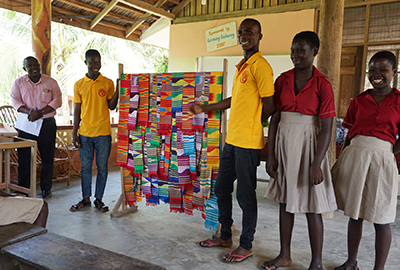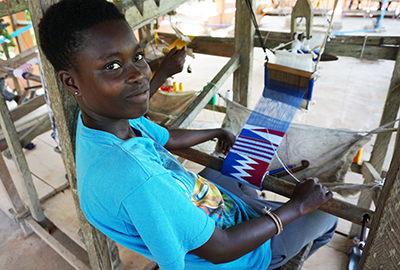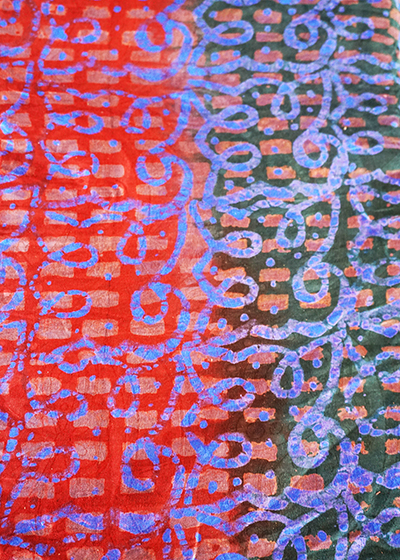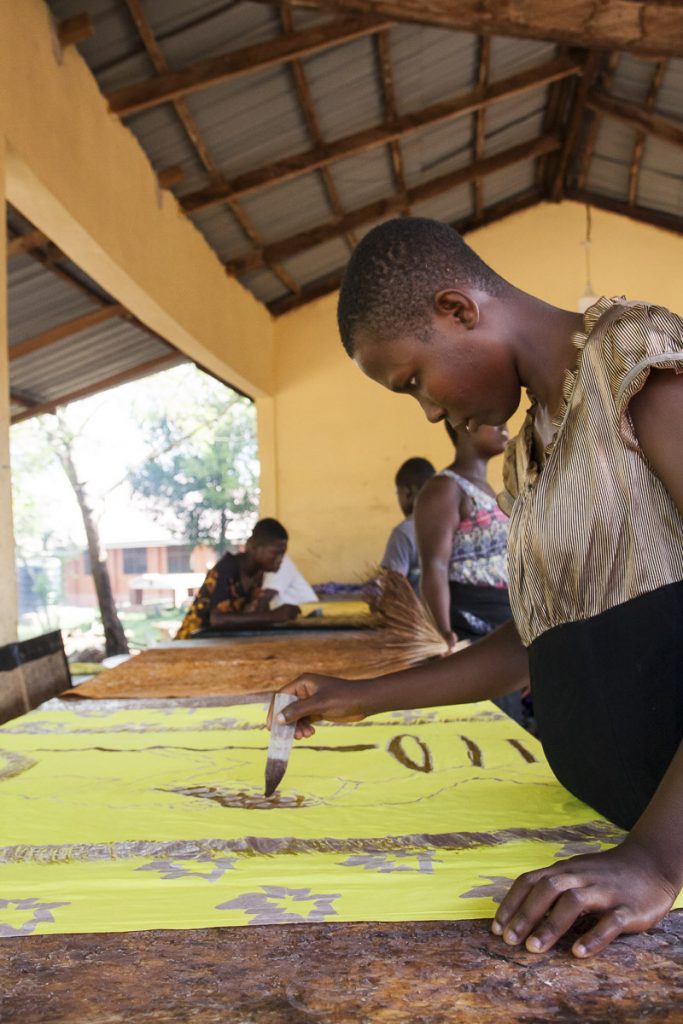At the Baobab School we teach both traditional weaving on very simple mechanical looms (Kente) and wax batik.
Kente
The woven Kente strips are extremely colourful, differing in colour and design. The various patterns often have a symbolic meaning based on proverbs or historical events.
Each strip is xx long and xx wide, or we also have smaller strips xx long xx wide. We can also write names or greetings on the strips.
Traditionally, the strips are sewn together: 24 strips for the king and 12 strips for the queen mother. The king throws this large cloth over one shoulder, leaving the other shoulder bare.
On festive occasions you can now see many women in clothes made of Kente. Often they just throw a strip over their shoulders, which means I’m going to a festive occasion.
Traditional motives for the batik we use cotton fabric and also cotton damask, a high-quality fabric that is already decorated with patterns during weaving. This damask fabric shines a little bit and falls beautifully.It is ideal for making clothes.The batik cloth comes in a variety of colours and patterns, often using the old traditional Adinkra motifs.Carved wooden blocks were once used for stamping, but nowadays the stamps are cut out of foam because they can soak up the wax and work faster.We also produce batik paintings on cloth and sew patchwork, dresses and anything you might want to order.
Wax batik
For the batik we use cotton fabric and also cotton damask, a high-quality fabric that is already decorated with patterns during weaving. This damask fabric shines a little bit and falls beautifully.
It is ideal for making clothes. The batik cloth comes in a variety of colours and patterns, often using the old traditional Adinkra motifs.








